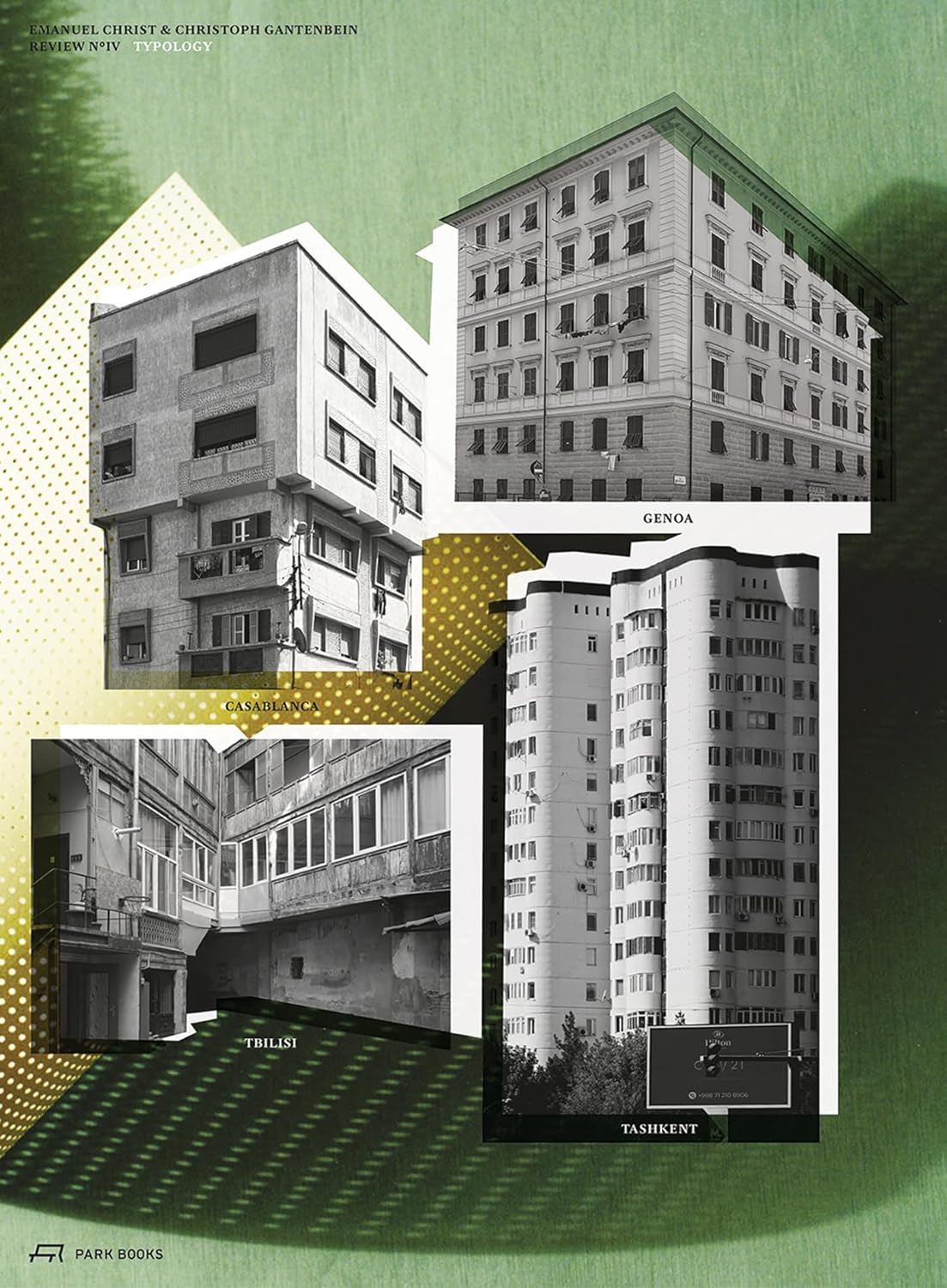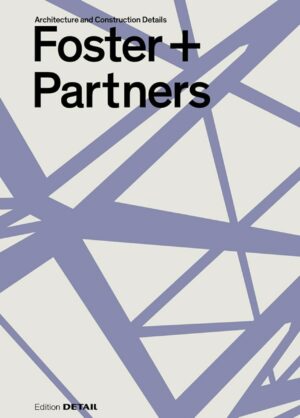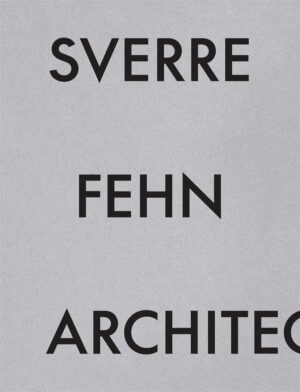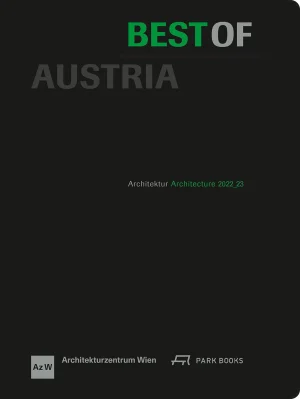TYPOLOGY 3. Tashkent, Genoa, Tbilisi, Casablanca. Review No. IV
The much anticipated third volume of Christ & Gantenbein’s Typology series analyzes modern and contemporary buildings in Tashkent, Genoa, Tbilisi, and Casablanca
This highly anticipated new volume in the Review series documents some 200 largely unpublished buildings in Tashkent, Genoa, Tbilisi, and Casablanca. These cities experienced rapid development during the 20th century, with each offering its unique response to modernism. Rather than merely providing a historical survey, this book uncovers the underlying logic of these cities’ urban fabric through an examination of their prevalent built heritage.
Over four years, architects Emanuel Christ and Christoph Gantenbein, together with teaching staff and students at their joint chair of architecture and design at ETH Zurich’s Department of Architecture, analyzed the featured structures to offer a wide-ranging array of original typological solutions for contemporary architecture and urban design. Each example is documented with an image, site and floor plans, axonometric projection, key data, and a brief description. An introductory text by Emanuel Christ, Victoria Easton, and Christoph Gantenbein relates the case studies to the theoretical framework of type and typology. Concise essays by Shukur Askarov and Boris Chukovich (Tashkent), Vittorio Pizzigoni and Valter Scelsi (Genoa), Levan Kalandarishvili and Jesse Vogler (Tbilisi), and Lahbib El Moumni and Karim Rouissi (Casablanca) explore the four cities’ historic evolution. A photo essay with color images capturing the urban atmosphere of the places rounds off this volume.
-
NOTE:
Edited by Emanuel Christ, Victoria Easton, Christoph Gantenbein, Giulio Galasso, Maria Margherita Innocenti, Elisaveta Maria Kriman
Uscita > OTTOBRE
Potrebbero interessarti anche:
TYPOLOGY 3. Tashkent, Genoa, Tbilisi, Casablanca. Review No. IV
The much anticipated third volume of Christ & Gantenbein’s Typology series analyzes modern and contemporary buildings in Tashkent, Genoa, Tbilisi, and Casablanca
This highly anticipated new volume in the Review series documents some 200 largely unpublished buildings in Tashkent, Genoa, Tbilisi, and Casablanca. These cities experienced rapid development during the 20th century, with each offering its unique response to modernism. Rather than merely providing a historical survey, this book uncovers the underlying logic of these cities’ urban fabric through an examination of their prevalent built heritage.
Over four years, architects Emanuel Christ and Christoph Gantenbein, together with teaching staff and students at their joint chair of architecture and design at ETH Zurich’s Department of Architecture, analyzed the featured structures to offer a wide-ranging array of original typological solutions for contemporary architecture and urban design. Each example is documented with an image, site and floor plans, axonometric projection, key data, and a brief description. An introductory text by Emanuel Christ, Victoria Easton, and Christoph Gantenbein relates the case studies to the theoretical framework of type and typology. Concise essays by Shukur Askarov and Boris Chukovich (Tashkent), Vittorio Pizzigoni and Valter Scelsi (Genoa), Levan Kalandarishvili and Jesse Vogler (Tbilisi), and Lahbib El Moumni and Karim Rouissi (Casablanca) explore the four cities’ historic evolution. A photo essay with color images capturing the urban atmosphere of the places rounds off this volume.
-
NOTE:
Edited by Emanuel Christ, Victoria Easton, Christoph Gantenbein, Giulio Galasso, Maria Margherita Innocenti, Elisaveta Maria Kriman
Uscita > OTTOBRE
Potrebbero interessarti anche:
Prodotti correlati
-
BEST OF AUSTRIA. Architecture 2022_23
65,00 € Aggiungi al carrello -
SVERRE FEHN ARCHITECTURE
135,00 € Aggiungi al carrello -
LIVING IN NEW RUSTIC STYLE
72,00 € Aggiungi al carrello -
In Offerta
WATERCOLOURS BY HANS J. WEGNER
65,00 €Il prezzo originale era: 65,00 €.59,00 €Il prezzo attuale è: 59,00 €. Aggiungi al carrello
FAQ
Leggi le domande frequenti per avere maggiori informazioni sui metodi di pagamento, la spedizione e molto altro
Per acquistare uno o più libri è sufficiente compilare l’apposito modulo al quale si accede dalla scheda di ciascun libro.
Qualora i volumi ordinati non siano tutti immediatamente disponibili, il nostro staff si riserva di contattarti via mail per concordare le modalità di spedizione (A: invio immediato dei volumi presenti a magazzino e successivo invio di quelli mancanti – B. invio unico dopo il ricevimento da parte nostra dei volumi mancanti).
N.B. la fattura deve essere esplicitamente richiesta al momento dell’ordine, comunicando la ragione sociale completa di partita IVA e/o Codice Fiscale e Codice SDI.
Ai sensi dell’Art.5 del relativo Decreto, l’acquirente ha il diritto di recedere dal contratto e restituire i volumi ordinati entro 10 giorni lavorativi, purchè nel medesimo stato in cui li ha ricevuti. Il diritto di recesso dovrà essere esercitato mediante invio di lettera raccomandata A.R. a: LIMOND S.a.s. – via Arnolfo di Cambio 24/A – 37138 Verona (VR) – entro il termine di 10 (dieci) giorni lavorativi dal ricevimento dei volumi.
Tutti i resi dovranno essere autorizzati da Limond S.a.s (tel. +393472455641) con l’assegnazione di un numero di autorizzazione alla resa. Le spese di spedizione saranno interamente a carico del cliente e non si accetteranno pacchi in contrassegno.
Al ricevimento dei volumi, e verificata la loro integrità, Limond S.a.s. provvederà, entro 10 (dieci) giorni, ad accreditare il cliente del valore dei volumi restituiti.
La tempestività nell’evasione dell’ordine è determinata dalla disponibilità della merce ordinata. In caso di immediata disponibilità l’ordine verrà evaso entro 2 giorni lavorativi. Qualora uno o più libri non dovessero essere presenti a magazzino possono essere ordinati su richiesta; il nostro staff informerà il cliente, via mail, circa i tempi necessari per l’evasione dell’ordine.
Pagamento tramite bonifico bancario anticipato alle coordinate comunicate in fase di check-out
I costi di invio (che comprendono imballo e spedizione) per libri e riviste in ITALIA sono i seguenti:
Servizio postale: 3-5 gg (per merce immediatamente disponibile presso il nostro magazzino)
- Spedizioni per acquisti fino a 62,00€: €5,50
- Spedizioni per acquisti fino a 120,00€: €9,50
- Spedizioni per acquisti superiori a 120,00€: Gratuite
Per una quotazione dei costi di invio in EUROPA o per spedizioni internazionali vengono richiesti i seguenti dati:
- Nome/Cognome
- Indirizzo (comprensivo di Codice postale)
- Telefono (meglio se Cellulare)
Alla conferma di accettazione, verranno comunicate coordinate bancarie/account PayPal da utilizzare per il pagamento. Un Una volta ricevuto, verrà evasa la spedizione inoltrando notifica e tracciabiltà.








